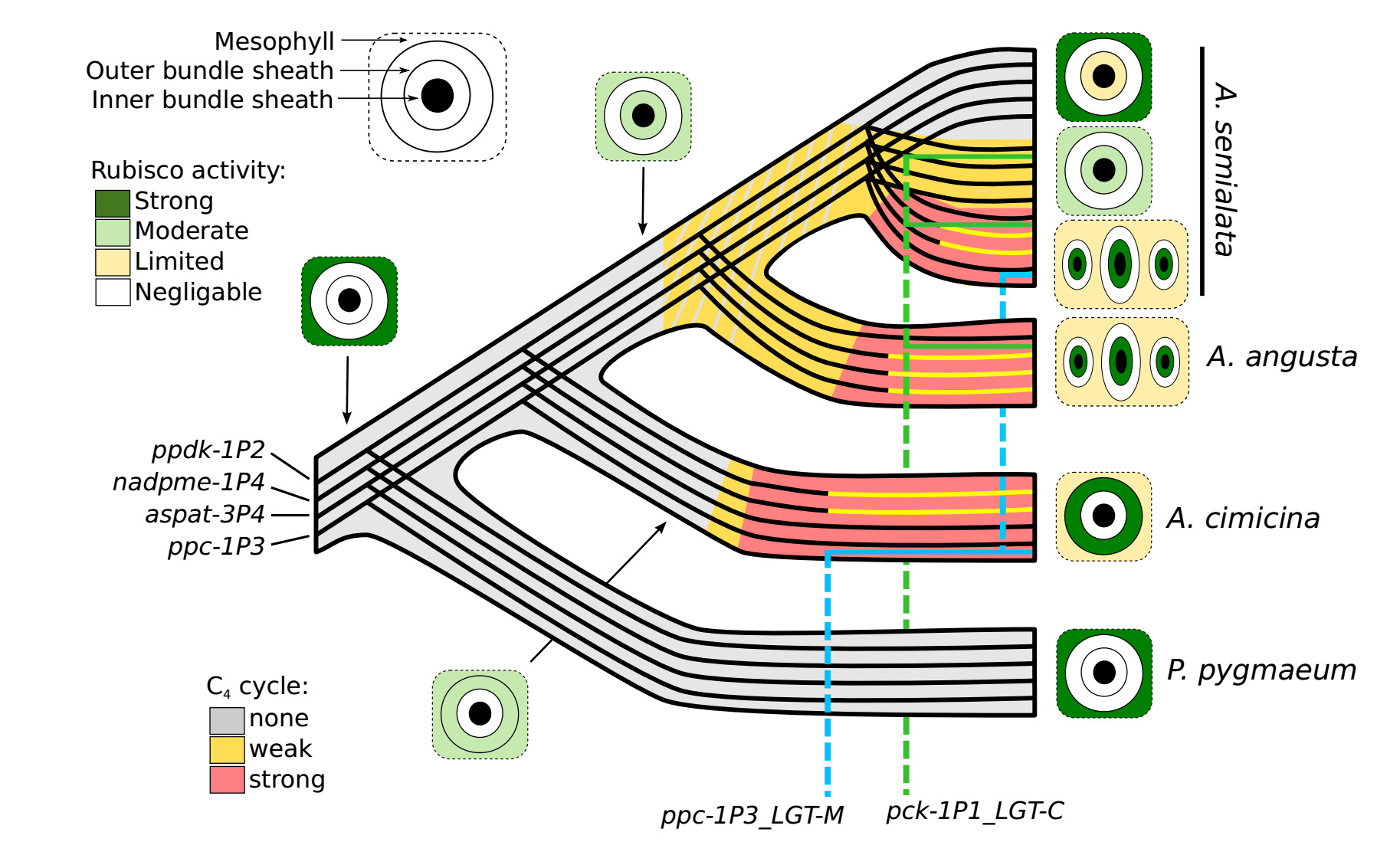
Many C4 lineages contain phylogenetically close yet distinct C4 branches. This pattern begs the question, how truly independent are these ancillary C4 lineages? Do they simply represent the presence of predisposition toward C4 photosynthesis in ancestral species, or are they less independent than the phylogenies would suggest? Examples of lateral gene transfer facilitating C4 evolution have been reported, suggesting an important role for introgression.18–21 However, genome-wide quantification of reticulate evolutionary processes across diverse C4 lineages are lacking. By sequencing members of all C4 branches of the Angiosperm phylogeny and their closest C3 and C2 sisters we will quantify the role of reticulate evolution in the origin of C4 photosynthesis. We aim to identify which genes are most commonly transferred in this manner, and at what phylogenetic scale this sort of adaptive introgression occurs.
citations:
- Christin, P.-A. et al. Adaptive Evolution of C-4 Photosynthesis through Recurrent Lateral Gene Transfer. Curr. Biol. 22, 445–449 (2012).
- Dunning, L. T. & Christin, P.-A. Reticulate evolution, lateral gene transfer, and innovation in plants. Am. J. Bot. 107, 541–544 (2020).
- Phansopa, C., Dunning, L. T., Reid, J. D. & Christin, P.-A. Lateral Gene Transfer Acts As an Evolutionary Shortcut to Efficient C4 Biochemistry. Mol. Biol. Evol. 37, 3094–3104 (2020).
- Christin, P.-A. et al. Multiple photosynthetic transitions, polyploidy, and lateral gene transfer in the grass subtribe Neurachninae. J. Exp. Bot. 63, 6297–6308 (2012).